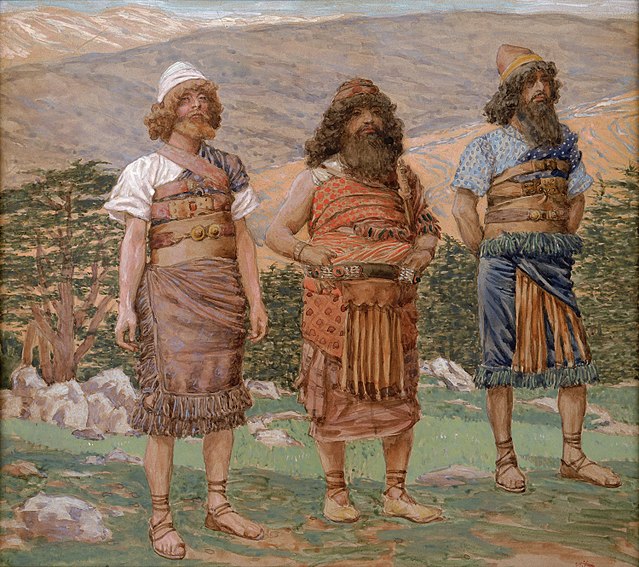The term Japhetites refers to the descendants of Japheth, one of the three sons of Noah in the Book of Genesis. The term was used in ethnological and linguistic writings from the 18th to the 20th centuries as a Biblically derived racial classification for the European peoples, but is now considered obsolete. medieval ethnographers believed that the world had been divided into three large-scale groupings, corresponding to the three classical continents: the Semitic peoples of Asia, the Hamitic peoples of Africa, and the Japhetic peoples of Europe.
Noah's Drunkenness, painting by James Tissot (between 1896 and 1902), Jewish Museum (Manhattan, New York). The painting depicts Noah lying in his tent; Shem and Japheth are holding up the cloak with their back to Noah; Ham is standing to the side.
Japheth is one of the three sons of Noah in the Book of Genesis, in which he plays a role in the story of Noah's drunkenness and the curse of Ham, and subsequently in the Table of Nations as the ancestor of the peoples of the Aegean Sea, Anatolia, Caucasus, Greece, and elsewhere in Eurasia. In medieval and early modern European tradition he was considered to be the progenitor of the European peoples.
"Japhet third son of Noah", as depicted in Promptuarii Iconum Insigniorum (c. 1553)
Noah's Drunkenness, painting by James Tissot (between 1896 and 1902), Jewish Museum (Manhattan, New York). The painting depicts Noah lying in his tent; Shem and Japheth are holding up the cloak with their back to Noah; Ham is standing to the side.
Shem, Ham, and Japheth, painting by James Tissot (between 1896 and 1902). Jewish Museum (Manhattan, New York).



